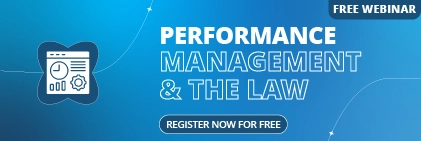Risk management is a key facet of running a resilient business. For managers and owners alike, the stakes are always high. Whether it’s ensuring compliance, keeping your data safe, or stopping operational disruptions, it can get stressful at times. Risk management software offers a structured and efficient way to handle these challenges. We’ll be going through a detailed roadmap for implementing risk management software successfully. We’ll also have a look at some common benefits and challenges, and some frequently asked questions. Our focus is on a universal framework you can adapt to your needs, regardless of the specific tool you choose.
Understanding Risk Management Software
Risk management solutions help organisations identify, assess, and mitigate risks. Outdated methods like manually updated spreadsheets are being replaced with automation. Analytics and centralised data flows ensure seamless operations. For HR managers and owners alike, it addresses large risks like financial vulnerabilities, or more granular tasks like managing workplace incidents.
Why is this important? Unaddressed risks can lead to compliance issues like legal fines and reputational damage. Operational setbacks can also happen more often without a proper risk management system.
Step-by-Step Guide to Implementing Risk Management Software
Implementing risk management software requires careful planning and execution. We’ve broken it down into five in-depth steps to ensure a successful implementation.
Step 1: Assess Your Organisation’s Risk Profile
You can’t manage what you don’t understand. Assessing your risk profile is the foundation of this process. Without it, you’re guessing at what matters for your business.
Start by talking to stakeholders. This can include the leadership team, owners, suppliers, and frequent clients. They can all highlight factors like operational risks or missed deadlines, or even something as major as a compliance gap. Look through your historical data and dig deep into past accidents. Have there been data breaches in the past? How did they get through? Could they get through again? Look for trends and common characteristics that you might’ve missed initially.
Break down the risks into categories. These can be, for example, compliance, operational, and financial. It will depend on what type of business you are in, but generally, the more specific you get, the more complex it will be. From there, rank the risks by their likelihood and impact. A healthcare firm could prioritise client data privacy, whereas a construction company could focus on OHS. Keep everything documented and backed up in a separate location. A risk register listing each risk, its impact, and control strategies helps drive clarity in your business.
Make sure your leadership team is on board. Buy-in from executives is a lot easier to get when you tie risks to business goals. Give an example of how a data breach could derail business operations and growth, or how drastic compliance fines from oversight agencies could be. Use industry benchmarks to validate your findings. If peers in your sector report high cybersecurity risks, double-check your own defences.
Timeframe: Allow 1-2 weeks for this step, depending on your organisation’s size.
Step 2: Choose the Right Risk Management Software
With your risk profile constructed, now it’s time to select a tool that matches your needs. This step is about finding the right fit, not just jumping on the first option you see.
List all your must-have features based on what you considered in Step 1. Need robust reporting for audits? Real-time alerts for incidents? Integration with existing HR systems? Be specific with your needs so as not to undercut yourself. Explore risk management software through demos, reviews, and referrals from other businesses in your industry. Look for tools with strong customer support and regular updates. Go for reliable tools based in your country to ensure you’re getting the most relevant information available.
Your team will use this daily, so prioritise an intuitive design. Try out common tasks like entering a risk or generating a report. Then, you’ll need to evaluate scalability and cost. Can it grow with you? Check how much the software will cost as well. Some tools offer basic plans for small businesses, scaling up as needed. Look out for hidden fees like training or add-ons.
Narrow your list down to 2-3 options, compare them against your risk priorities, and pick the winner. Make sure your team is on board with your choice. If they don’t like the software, you’ll be facing an uphill battle. Look for the best risk management software for small businesses if you’re a small business, or a flexible software solution if you aren’t overly fussed about that.
Pro Tip: Look for risk management software with customisable templates. You’ll save time tailoring it to your unique risk profile.
Timeframe: 2-3 weeks, including research and trials.
Step 3: Plan the Implementation
A solid plan turns vision into action. This step ensures everyone knows their role and the timeline is realistic. Make sure you set clear goals and define what success looks like.
For example, “Cut incident response time by 30%” or “Achieve 100% compliance reporting accuracy.” Make goals measurable, and your team will work hard to get the results you need.
Map Out Phases: Break the rollout into chunks:
- Setup: Install the software (1-2 days for cloud-based tools).
- Data Migration: Transfer existing risk data (1-2 weeks, depending on volume).
- Testing: Run a pilot with a small group (1 week).
- Full Launch: Roll out to all users (1-2 days).
When assigning responsibilities, do it in a logical manner and talk to your team before making final decisions. Common roles include IT handling setup, HR overseeing data input, and leadership tracking progress. Designate a project lead to coordinate. When making a timeline, you’ll need to build in buffers for assumed delays. Common occurrences include an extra week for testing due to unexpected issues arising. Above all else, talk to your team. Share the plan with them and highlight how it’ll make their jobs more efficient.
Timeframe: 1 week for planning, 4-8 weeks for execution.
Step 4: Train Your Team
Adoption hinges on training. A tool your team doesn’t use is a waste of money. A confident and capable team will take full advantage of the investment and use it to grow the business and help it excel.
Developing a training plan can sound strenuous. You’ll need to tailor it for each role, and HR would need to have sessions on compliance tracking and incident logging. The key idea is to keep it relevant for the role in question. Keep the sessions grounded, and go through realistic scenarios your team is likely to come across.
It’s best to start small. Train a pilot group first of about 10 users to iron out kinks, then scale to everyone. If you’re overzealous, you might find yourself wasting precious company time with irrelevant meetings. Set up a help channel, such as emailing the IT manager, and schedule follow-up training sessions a few weeks after launch. You’ll also want to embed this into your onboarding process for new employees.
Monitor the progress of individuals logging on and completing tasks, and follow up with those who have not yet adapted to the new system. Letting experienced employees help those who are struggling is a great way to guide employees without overextending the leadership team.
Timeframe: 1-2 weeks for initial training, ongoing support as needed.
Step 5: Monitor, Refine, and Optimise
Implementation isn’t the finish line; it’s only the start. Continuous improvement keeps the risk management software valuable.
Use built-in analytics to track KPIs such as incident frequency, resolution times, and compliance rates. Compare them to pre-implementation baselines. Talk to your employees, perhaps run a survey a month or two after the launch to collect feedback. What’s working? What’s confusing? Both informal and formal chats are a great way to gather data to refine your processes. Reviewing these regularly, possibly with scheduled quarterly check-ins, helps stay on top of the risks and the performance and usage of the risk management software. Tweak dashboards, add alerts, or integrate new modules based on feedback. Small changes can boost efficiency many times over.
It’s also important to celebrate wins! Share successes, like reaching your initial targets and goals, to reinforce value and maintain momentum.
Timeframe: Ongoing, with formal reviews every 3 months.
Benefits of Risk Management Software
There are a lot of benefits of implementing and using risk management software. The efficiency advantages, including automated reporting and audits, are significant. Insights into business operations and customer behaviour not only help you identify risks earlier, but you can also adjust how you run the business to better serve the customer, leading to more profitability. In a similar vein of growing your profits, fewer incidents will always mean fewer costs.
Conclusion
Implementing risk management software is a game-changer for HR managers and business owners alike. This guide, ranging from assessing risks and choosing a tool to planning the rollout and training your team and even optimising over time, gives you a clear path to success. Tools like those from Sentrient can fit into this framework, but the principles apply universally. Start today, and build a stronger, risk-aware organisation for tomorrow.
FAQs
1. What’s the simplest way to implement risk management software?
Begin with a thorough risk assessment to pinpoint needs, then pick a usable and scalable software solution with strong support. Roll it out in phases and keep the team in the loop. Simplicity comes from preparation.
2. How does risk management software benefit HR specifically?
It automates compliance tracking, secures employee data, and simplifies incident reporting. HR managers can spend less time on admin and more on strategy.
3. Can small businesses justify the cost?
Absolutely! Affordable plans exist, and the payoff often exceeds the investment. Start small and scale as benefits emerge.
4. How long should the implementation take?
For small to mid-sized teams, expect 6-12 weeks: 1-2 for assessment, 2-3 for selection, and 4-8 for rollout. Larger firms might need longer for data migration and training. This depends on your business structure and composition.
5. What if my team won’t adopt it?
Reduce any resistance with tailored training and clear benefits, like cutting report time from hours to minutes. Pick an intuitive tool and address concerns early. If your team is on board, it’ll all go smoothly.
6. How do I know if the software’s working?
Keep an eye on key metrics and look for improvements. If you can’t find any, that signals a broader issue, either with the software not living up to expectations or with your business operations as a whole. If you are seeing improvement in line with expectations, that means you’re doing great.
Read More About Risk Management System:
- 9 Steps to Develop an Effective Risk Management Strategy: Key Steps and Best Practices
- 9 Key Components of an Effective Enterprise Risk Management Framework
- Implementing Risk Management Software: 5 Essential Steps in a Step-by-Step Guide
- Top 10 Questions to Ask Before Choosing Risk Management Software
- How Can a Risk Management System Improve Compliance and Security





